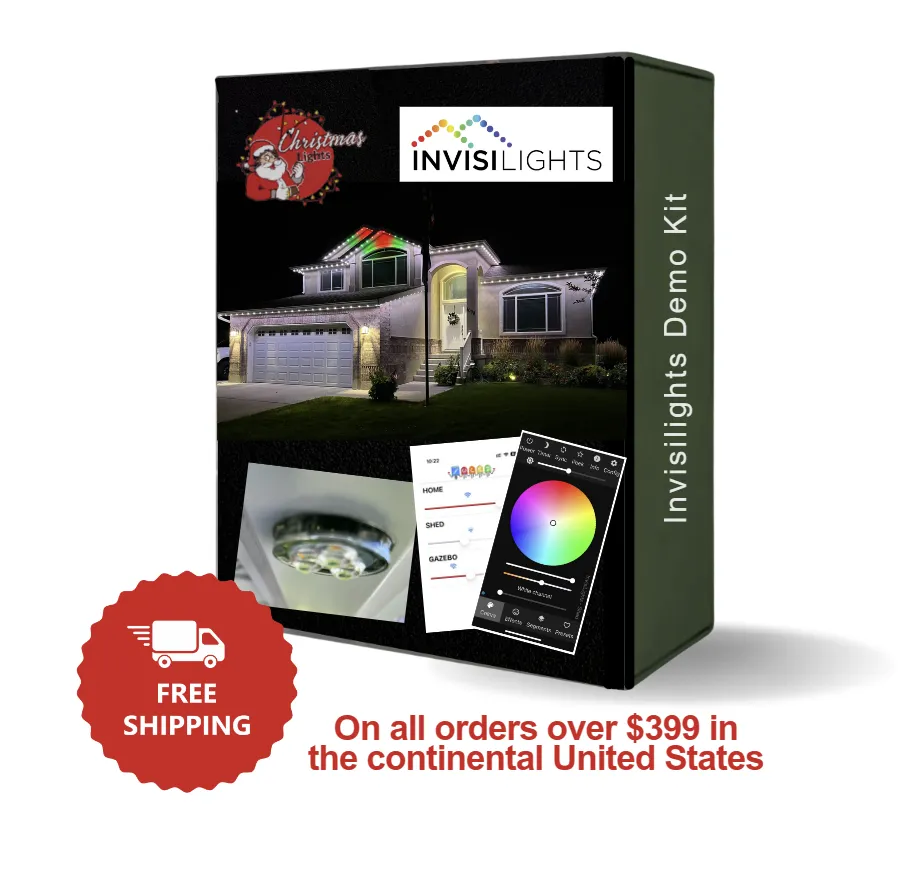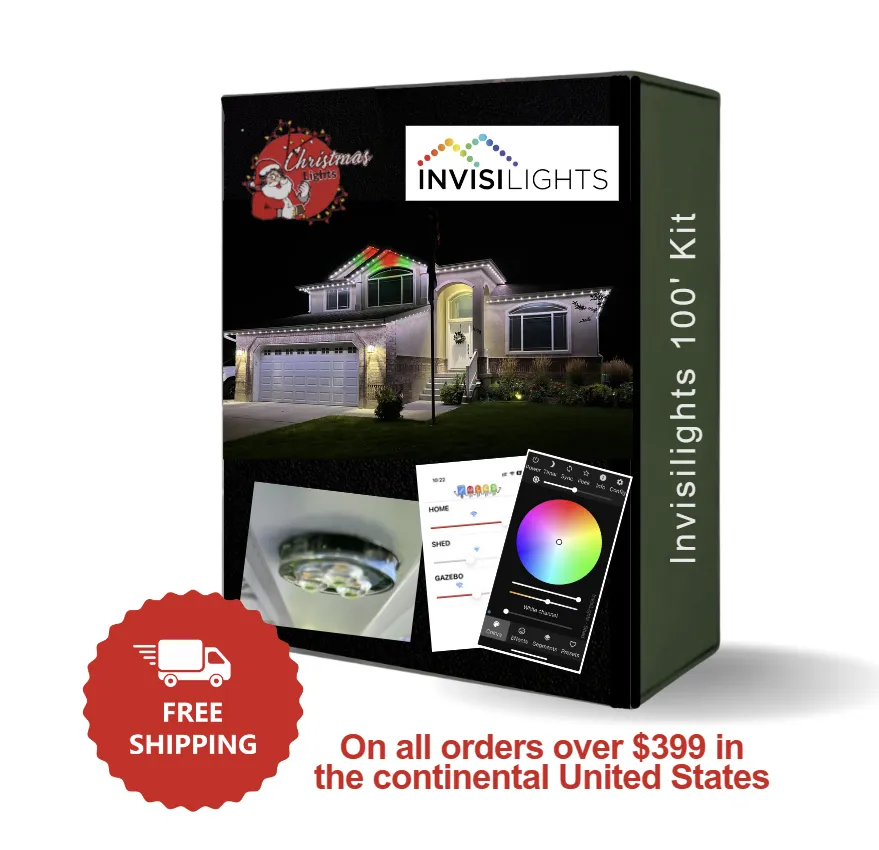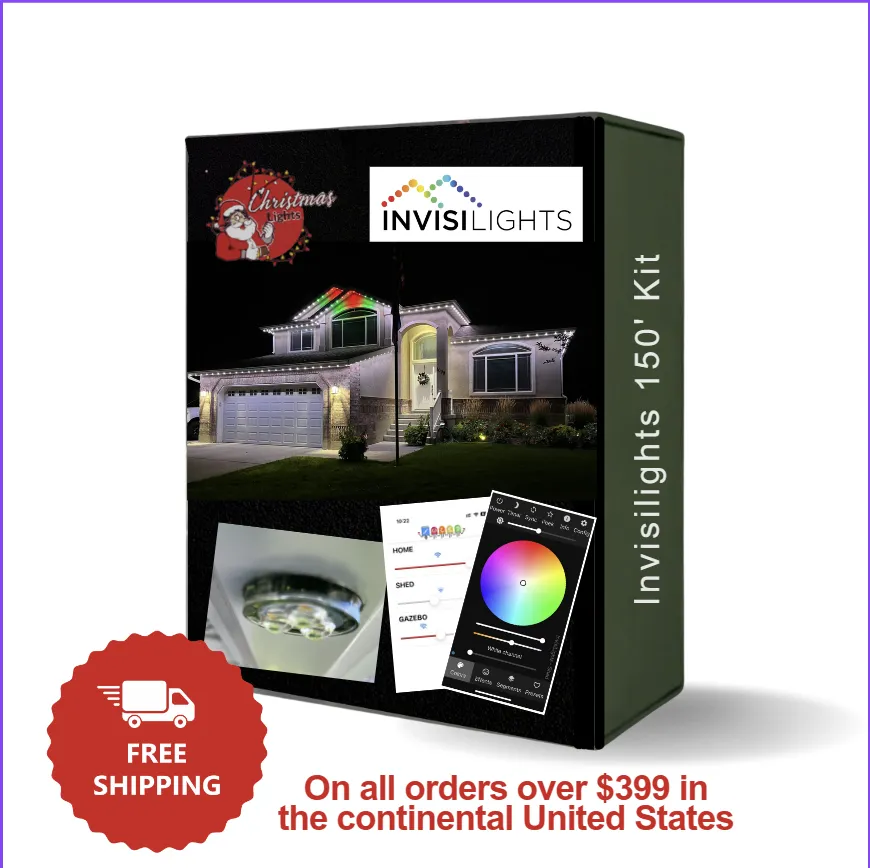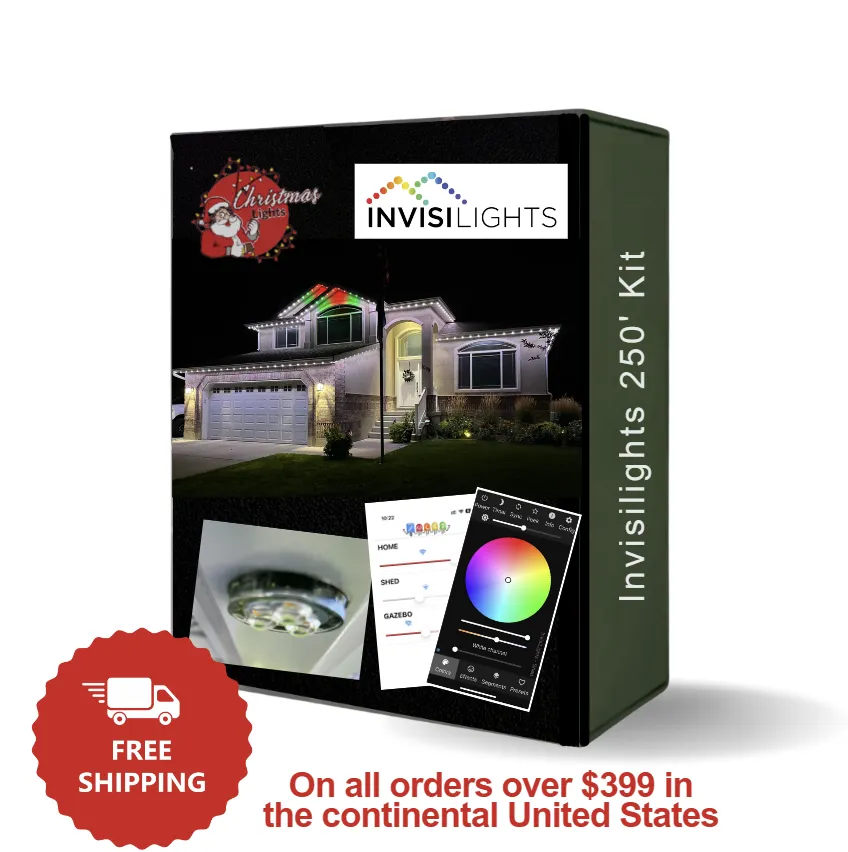Invisilights
Permanent Holiday Lighting
Customizable Lights for Any Event
Discover the Transformative Power of Invisilights: Expertly Installed Permanent Lighting Solutions
Enhance your installation offerings with Invisilights, the premier permanent lighting solution designed for seamless integration into any property’s exterior architecture.
Crafted with high-quality aluminum channels and advanced LED technology, Invisilights delivers durability and superior energy efficiency—key selling points for your clients seeking long-lasting, cost-effective lighting solutions. Our system not only provides brilliant illumination but also boosts the aesthetic appeal and functionality of any home.
Offer your clients peace of mind with our robust 5-year warranty, ensuring reliable performance and minimal maintenance needs. This warranty supports your commitment to quality and customer satisfaction, making it easier for you to sell and install with confidence.
Our flexible, programmable system allows you to meet any client’s specific desires—from subtle accents to full-scale holiday displays—making it an adaptable choice for various applications. With Invisilights, you can cater to a wide range of preferences and needs, increasing your market reach and customer retention.
Choose Invisilights for your installations and add a transformative product to your portfolio that will impress clients and ensure your services remain in demand for years to come.
Frequently Asked Questions
What exactly comes in the 150' InvisiLights permanent outdoor lighting kit?
The InvisiLights kit is comprehensively equipped to ensure you have everything you need for installation. Each kit includes:
27 sticks of 6-foot Aluminum Channel to house and protect the lighting elements.
150 feet of dynamic RGBW LED Lights, which includes 23 sets of 6-count and 14 sets of 1-count lights, allowing for extensive coverage and diverse configuration options.
2 Data Boosters to enhance signal strength across the lighting installation, ensuring consistent control and color output.
A 320W Power Supply capable of supporting up to 190 puck lights, providing ample power for even the most extensive setups.
1 GFCI Outlet Adapter to ensure safe outdoor electrical connections.
1 Controller that allows you to manage and customize the lighting effects easily.
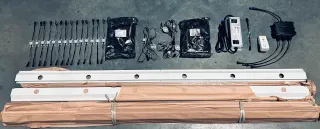
Will I need any additional components besides what's included in the Invisilights permanent lighting kit?
While the Invisilights kit comes with all the essential components for a standard installation, there are a couple of scenarios where you might need additional items:
Jumper Wires: Depending on the layout of your installation and the number of gaps or 'jumps' between the sections of lights, you may require jumper wires. These wires help bridge the gaps without losing the continuity of the light sequence, ensuring a smooth and uniform display across more complex architectures.
Data Boosters: If any section of your lighting setup is more than 15 feet away from the control box, additional data boosters will be necessary. Data boosters help maintain the integrity and brightness of the lights over longer distances, ensuring consistent performance throughout your installation.

Can I choose the color of the aluminum channel for my InvisiLights kit?
Yes, you can select your preferred color for the aluminum channel to match your home’s exterior or personal taste. Please make sure to specify your color choice in the notes at checkout when you place your order.
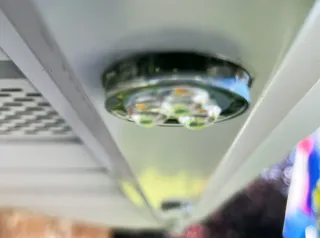
How do the included components of the InvisiLights kit enhance the lighting system?
Each component in the InvisiLights kit plays a crucial role in creating an effective and stunning lighting display:
Aluminum Channels: Provide a durable, weather-resistant housing for the LED lights, which helps in maintaining a clean and nearly invisible look during the day.
RGBW LED Lights: Offer vibrant, full-spectrum color and white light combinations, making it perfect for any occasion from festive holidays to elegant ambient lighting.
Data Boosters: Ensure that the signal remains strong across longer distances, which is crucial for larger installations.
Power Supply: Designed to efficiently handle the energy needs of the system without overload, ensuring safety and durability.
GFCI Outlet Adapter: Adds an extra layer of safety by protecting against electrical shorts and surges, particularly important in outdoor settings.
Controller: Provides the flexibility to customize and control the lighting sequences, colors, and patterns right from your smartphone or controller, adding convenience and advanced functionality to your lighting system.
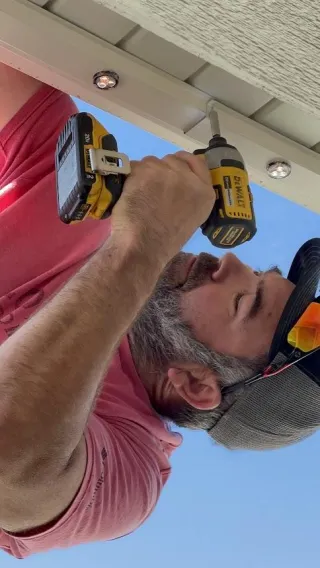
Can I use Invisilights year-round?
Absolutely! Invisilights are designed for versatile use throughout all seasons. Whether you're celebrating a special occasion, setting a mood for a party, Love your favorite sports team, or simply enhancing your home's ambiance, our lighting systems provide the perfect solution for any event, big or small.
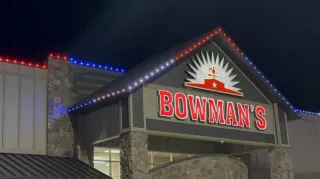
Can I set timers and events for Invisilights?
Yes, Invisilights feature advanced programmable settings that allow you to schedule lighting for specific events and automate timers. This functionality ensures that your lighting preferences are perfectly aligned with your lifestyle, turning on and off at predetermined times without any manual intervention.
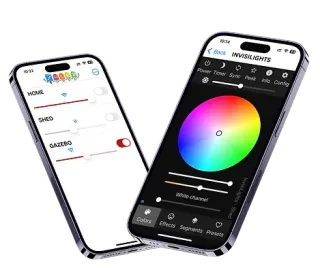
Is it possible to achieve warm or soft white with Invisilights?
Absolutely, Invisilights are equipped with RGBW technology, which includes a dedicated white LED alongside the standard red, green, and blue LEDs. This addition allows the system to produce authentic warm white, soft white, and various other shades of white with greater accuracy and intensity compared to traditional RGB systems. This capability ensures that you can effortlessly tailor the lighting to fit the desired ambiance and aesthetic of any environment, providing precise control over both vibrant colors and the subtlety of different white tones.
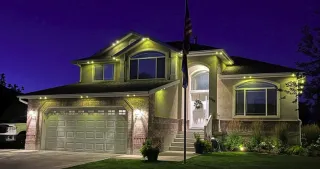
How do you ship your product?
Our products are shipped directly from our warehouse using reliable shipping carriers to ensure timely and safe delivery. Each product is securely packaged to prevent damage during transit, and we provide tracking information so you can follow your order’s journey to your doorstep.
Where are the controller and power supplies installed?
The controller and power supplies for Invisilights are typically installed in an accessible location such as a garage or utility room. These components connect to your home’s WiFi network, allowing seamless control over the lighting system via our user-friendly mobile app.
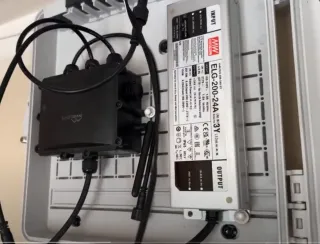
How long do Invisilights last?
Invisilights are engineered to last, with each LED bulb boasting a lifespan of over 50,000 hours. Given a typical usage of 10 hours per night, this translates to approximately 5,000 nights. This means your Invisilights could illuminate your home's exterior for nearly 14 years under these conditions, ensuring that your investment not only adds beauty but also long-term value to your property.
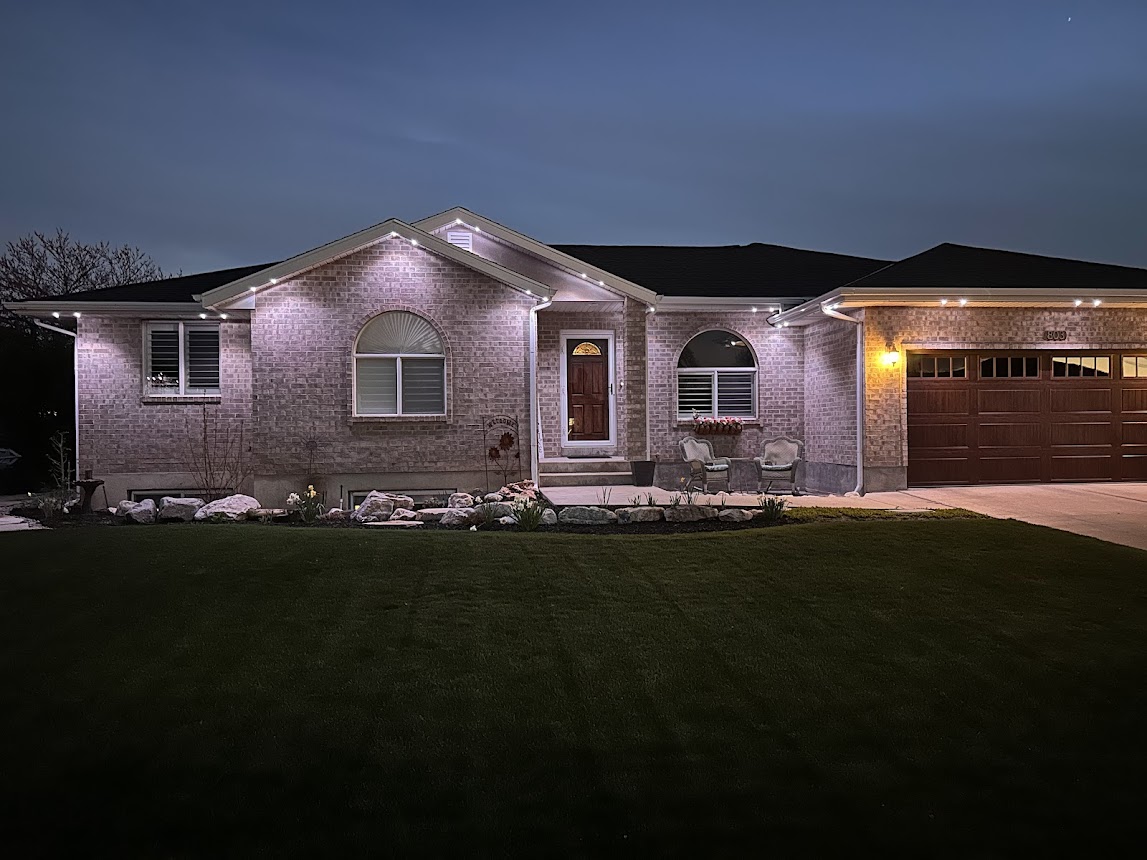
Are Invisilights dimmable?
Yes, all Invisilights are fully dimmable. This feature allows you to adjust the intensity of the light to suit various occasions, from a soft glow for a romantic evening to bright, vibrant colors for a festive celebration.

What types of custom channels are available?
Invisilights offers two types of custom channels, available in 40 different colors, ensuring a nearly invisible installation. These channels are designed to blend seamlessly with your home’s architecture, providing discreet yet effective lighting.

Can I control different zones independently?
Yes, the Invisilights system supports multiple zones which can be controlled independently or synchronized. This functionality allows for intricate lighting designs that can vary across different areas of your home, enhancing the overall impact and utility of your installation.
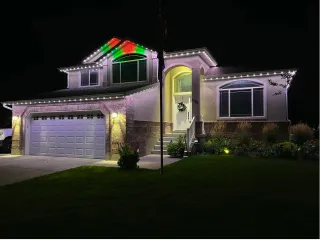
What is outdoor permanent lighting?
Permanent lighting refers to architectural-grade lighting systems that are installed permanently on your property to provide year-round illumination.
How does permanent lighting differ from traditional holiday lighting?
Unlike traditional holiday lighting, which is typically temporary and used only during specific seasons, permanent lighting is installed once and can be used throughout the year for various occasions
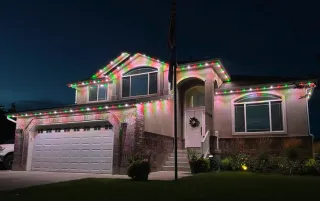
Discover Expert Tips on Our Blog
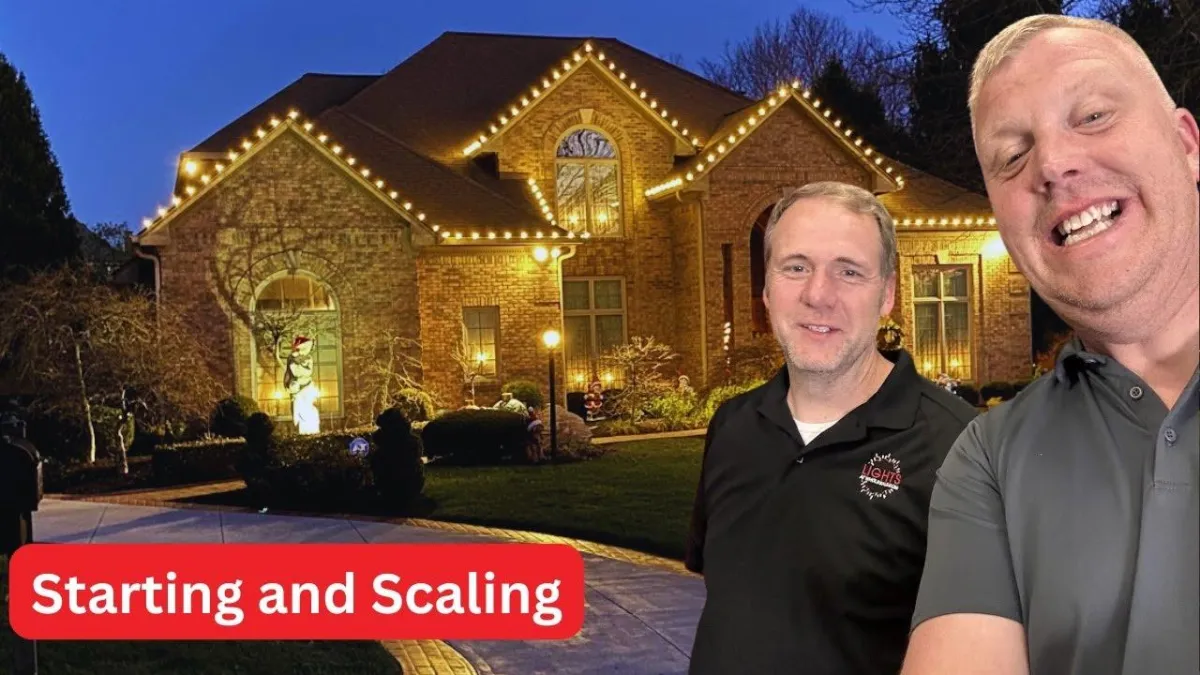
From Startup to Scale: Managing Larger Christmas Light Installations
The Christmas light installation industry continues to grow, offering incredible opportunities for entrepreneurs willing to embrace both its challenges and rewards. Whether you're just starting out or looking to expand your existing operation, understanding how to scale effectively while maintaining quality service is crucial for long-term success.
When to Start Scaling
One of the most common questions in the Christmas light installation business is when to start scaling. The signs that it's time to grow aren't always obvious, but certain indicators should catch your attention.
If you find yourself sitting on a roof for 45 minutes answering phone calls instead of installing lights, that's a clear signal you need help. As one successful installer noted, "I was sitting at the same spot for 45 minutes because I keep having all these phone calls coming in." This situation not only reduces your productivity but also impacts your ability to provide quality service to existing customers.
The revenue threshold can also guide your scaling decisions. Most solo operators can handle between $100,000 to $200,000 in annual revenue with minimal help. Beyond this point, trying to maintain operations alone becomes increasingly difficult and potentially dangerous due to rushing between jobs.
Another key indicator is booking out too early in the season. While it might seem great to be fully booked through November, this often means your prices are too low. When you're booked solid early, you're likely leaving money on the table and missing out on higher-paying last-minute customers who typically appear after Halloween.

First Hiring Decisions
When scaling your operation, your first hire should be someone to handle phone calls and customer service. This position is crucial as they become the voice and face of your company. Many successful operators find that hiring women for customer service roles can be particularly effective, as they often excel at understanding customer needs and selling the experience rather than just the service.
"The most important position is the person that answers the phone," as one industry veteran puts it. "They are the face of your company... you want to make sure that you get someone that has some attitude with them, like a good attitude and can talk friendly with people."
When it comes to installation crews, start by creating detailed training procedures. Document everything through videos and written materials. This investment in training materials pays off as you continue to grow, allowing new hires to review procedures independently rather than requiring constant supervision.
Equipment and Infrastructure
Making smart decisions about equipment is crucial for sustainable growth. While many dream of a fleet of new vehicles, successful operators often recommend starting with what you have. One successful installer shared that he started with a Toyota Camry, adding a ladder rack to make it work. The key is to match your equipment to your business model and growth stage.
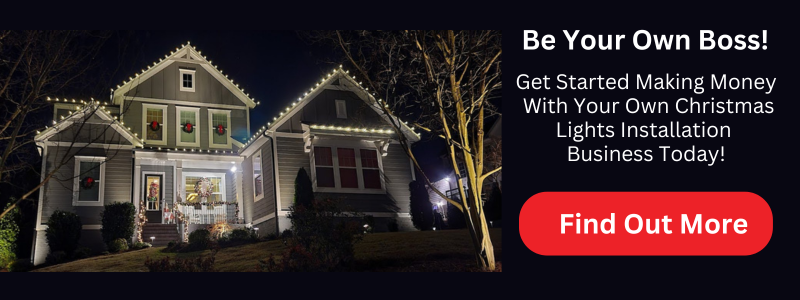
For those ready to invest in vehicles, the choice between vans and trucks with trailers often depends on your existing business model:
- Cargo vans work well for dedicated light installation businesses
- Trucks and trailers might make more sense if you're also running a landscaping operation
- Consider your crew's driving experience - not everyone is comfortable maneuvering trailers
Operations Management
Efficient operations become increasingly important as you scale. Route optimization and territory management can significantly impact your bottom line. One successful approach is to target specific neighborhoods and build density in those areas rather than traveling across town for individual jobs.
"Focus on neighborhoods," advises one veteran installer. "There's enough homes that if you get into a neighborhood, you can keep doing more and more of those." This strategy not only reduces drive time but also increases referral opportunities and makes service calls more efficient.
Inventory management becomes crucial as you grow. While a $5,000 initial investment in materials might seem substantial, it can disappear quickly once jobs start rolling in. Develop systems to track:
- Materials allocated to each job
- Inventory levels across multiple crews
- Reorder points for popular items
- Storage and organization systems
Communication Systems
Perhaps the most critical aspect of scaling successfully is developing robust communication systems. This includes both external communication with customers and internal communication with your team.
Successful businesses often maintain 50 or more touchpoints with customers throughout the year, from initial contact through post-season follow-up. These touchpoints might include:
- Initial inquiry response
- Quote delivery
- Installation scheduling
- Day-of-installation updates
- Quality checks
- Take-down scheduling
- Off-season maintenance communications
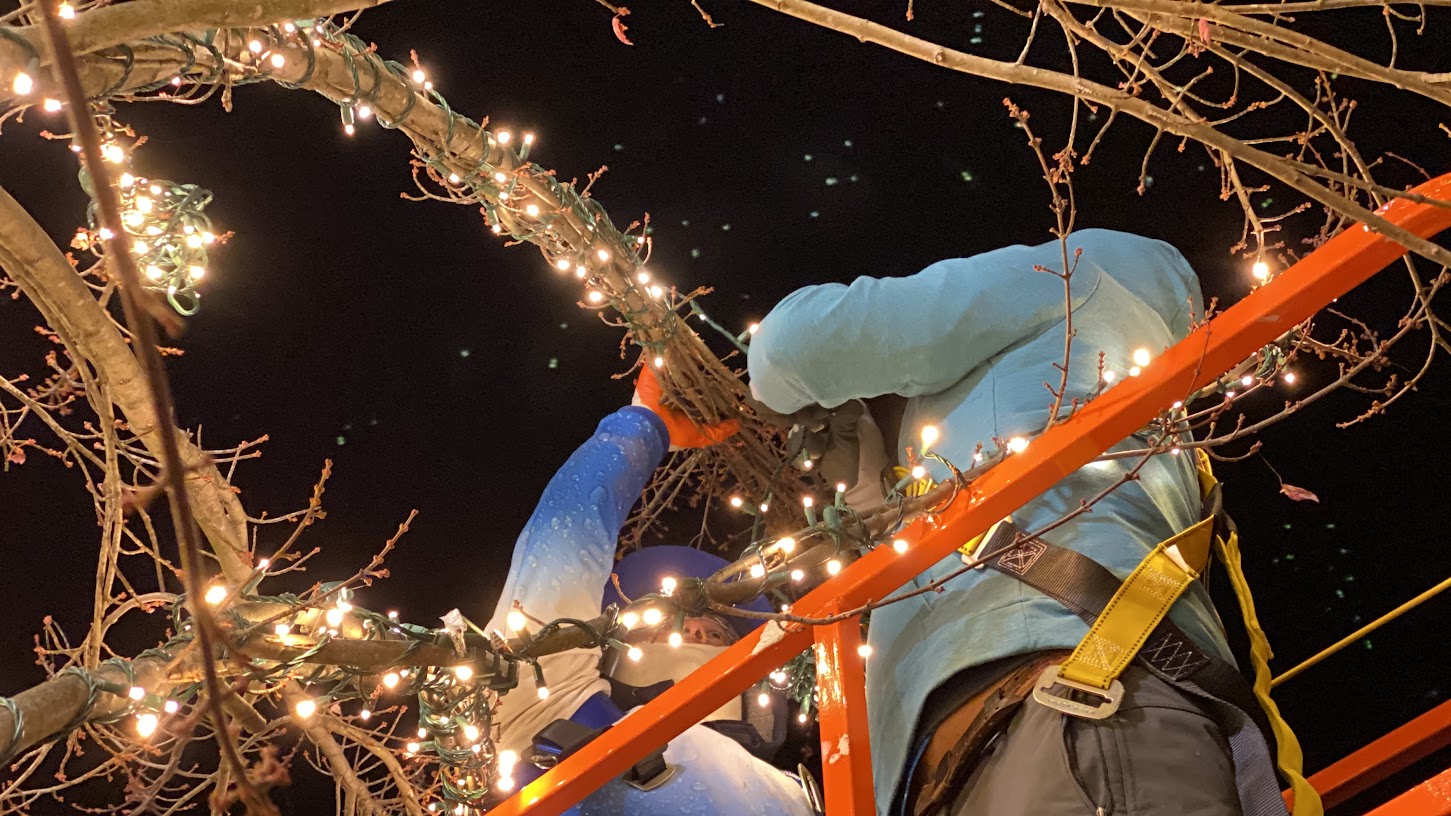
Internal communication is equally important. Create clear channels for:
- Safety concerns
- Job site challenges
- Schedule changes
- Inventory needs
- Quality control issues
Pricing Strategy for Growth
One common mistake when scaling is not adjusting prices appropriately. Many operators keep their prices too low for too long, making it difficult to sustain quality service as they grow. Remember that later-season customers (mid-November onward) often have higher budgets and are more concerned with getting the job done than finding the lowest price.
Consider implementing tiered pricing:
- Early season rates
- Peak season premium rates
- Rush job surcharges
- Commercial project rates
One installer shared that when he raised his prices from $4-5 per foot to $8 per foot, he found it was "about the same" difficulty to close sales. The lesson? Don't undervalue your service out of fear.
Future Growth Opportunities
The Christmas light installation industry continues to evolve, particularly with technological advances. Permanent lighting installations represent a growing segment of the market, with some installers reporting more calls for permanent installations than traditional seasonal lighting.
New opportunities include:
- Color-changing lighting systems
- Smart home integration
- Year-round decorative lighting
- Holiday-specific programming
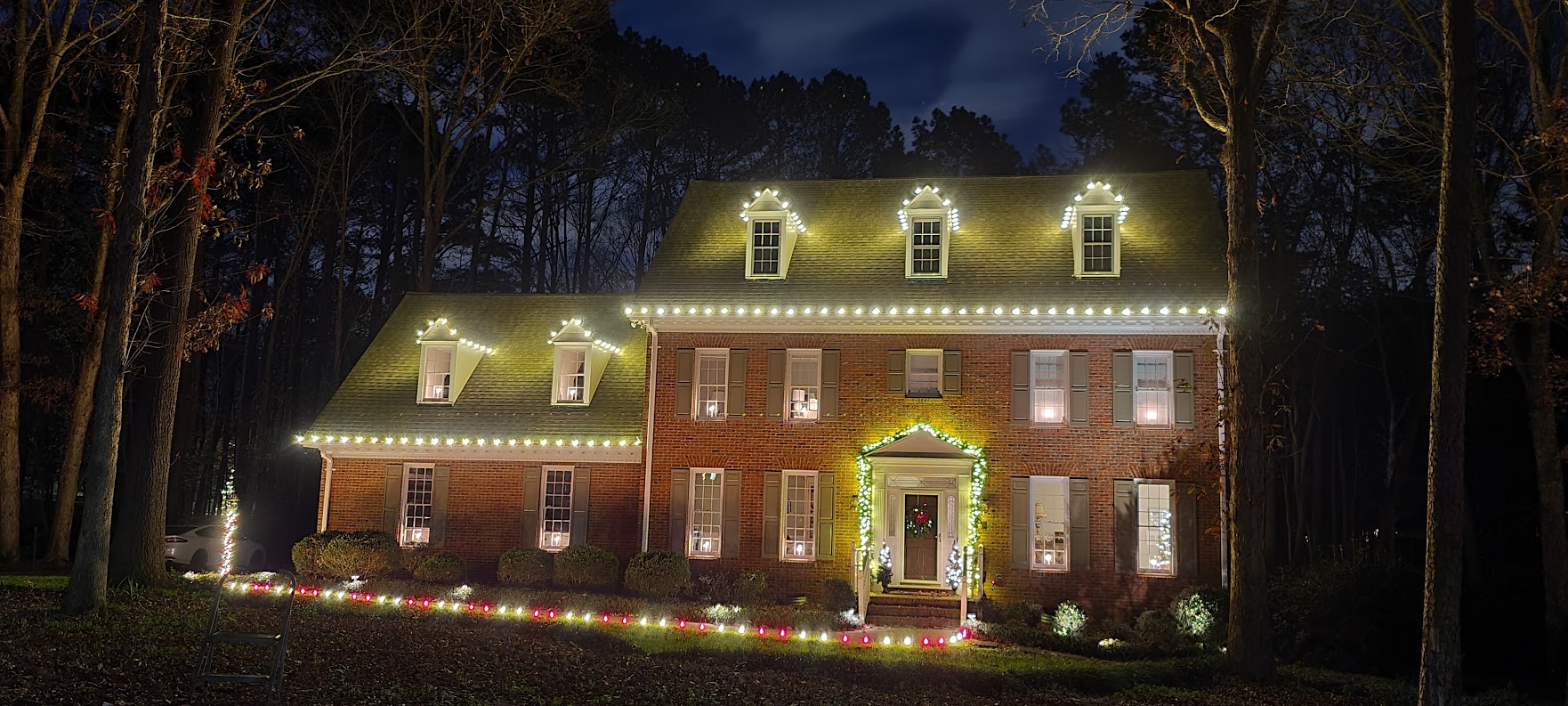
Safety Considerations Throughout Scaling
As you scale your business, never compromise on safety. Heavy workloads and tight schedules can tempt crews to take shortcuts, but one accident can devastate your business and, more importantly, someone's life.
Key safety considerations include:
- Proper ladder and roof safety equipment
- Regular safety training
- Clear weather-related policies
- Equipment maintenance schedules
- Communication protocols for dangerous situations
Scaling a Christmas light installation business requires careful balance between growth and quality service. Success comes from:
- Recognizing the right time to scale
- Making strategic hiring decisions
- Investing in proper equipment and systems
- Maintaining strong communication
- Implementing appropriate pricing strategies
- Never compromising on safety
Remember that it's never too late to start or scale your Christmas light installation business. Some of the most successful operators started as late as mid-November and still built thriving enterprises. The key is to learn from each season, document your processes, and continuously improve your operations.
Whether you're aiming to grow from solo operator to multiple crews or from local service to regional provider, focus on building sustainable systems that can support your growth. Your success in scaling will depend not just on how many lights you can install, but on how well you can maintain quality, safety, and customer satisfaction as you grow.
Most importantly, don't get discouraged if your phone isn't ringing before November 1st. The season has natural rhythms, and understanding these patterns will help you plan your growth effectively. With proper planning, systems, and execution, your Christmas light installation business can scale successfully while maintaining the quality that got you started in the first place.

Q1: When is the right time to hire my first employee?
A: It's time to hire when you find yourself consistently unable to handle phone calls while installing, missing appointments, or if you're reaching $100,000-$200,000 in annual revenue as a solo operator. A key indicator is spending excessive time answering calls while on job sites instead of completing installations.
Q2: What should be my first hire in a Christmas light installation business?
A: Your first hire should be someone to handle phone calls and customer service. This person becomes the face of your company and is crucial for maintaining customer relationships. Many successful operators find that hiring someone who is naturally personable and good at communication is essential for this role.
Q3: Do I need to buy a new van or truck to scale my business?
A: No, you don't need to start with new vehicles. Many successful operators started with personal vehicles (even a Toyota Camry with a ladder rack). As you grow, choose vehicles based on your business model - cargo vans work well for dedicated light installation businesses, while trucks and trailers might make more sense if you're also running a landscaping operation.
Q4: When should I raise my prices?
A: You should raise your prices when you're consistently booking out too early in the season (like through the end of November) or if you're unable to meet demand. Many operators find they can successfully raise prices from $4-5 per foot to $8+ per foot without losing customers, especially during peak season.
Q5: Is it too late to start a Christmas light installation business in November?
A: No, it's not too late. Some successful operators have started as late as mid-November and still achieved significant revenue ($40,000+ in their first partial season). Starting late in the season can actually provide valuable experience and photos for marketing the following year.
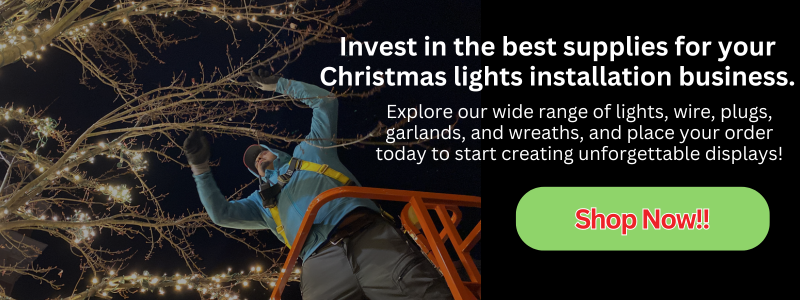
Q6: How do I manage multiple crews efficiently?
A: Efficient crew management requires documented processes, training videos, clear communication systems, and route optimization. Focus on specific neighborhoods rather than spreading crews across town, and implement inventory management systems to track materials across teams.
Q7: What percentage of customers typically return the following year?
A: Most established Christmas light installation businesses see a 70-80% customer return rate. First-year businesses might see slightly lower rates, but as you build a solid customer base and provide quality service, return rates typically increase.
Q8: How do I handle commercial jobs while maintaining residential installations?
A: Plan commercial installations carefully by grouping larger jobs together and assigning your most experienced crews. For week-long commercial installations, either dedicate a specific crew or schedule them during slower periods to avoid impacting residential installations.
Q9: What are the essential safety requirements for scaling?
A: Essential safety requirements include proper ladder and roof safety equipment, regular safety training, clear weather-related policies, equipment maintenance schedules, and communication protocols for dangerous situations. Never compromise safety for speed or growth.
Q10: How many customer touchpoints should I have throughout the year?
A: Successful businesses maintain approximately 50 touchpoints with customers throughout the year, including initial inquiry response, quote delivery, installation scheduling, day-of-installation updates, quality checks, take-down scheduling, and off-season maintenance communications. This helps maintain customer relationships and ensures repeat business.
Feel free to reference these FAQs on your website, social media, or customer communications. These questions and answers can help potential customers understand your business better and demonstrate your expertise in the industry.
Copyright ©2024 All Right Reserved website designed by christmaslights.io
Terms of Service / Privacy Policy
Have questions or need assistance?
Contact us at (855)619-LITE


